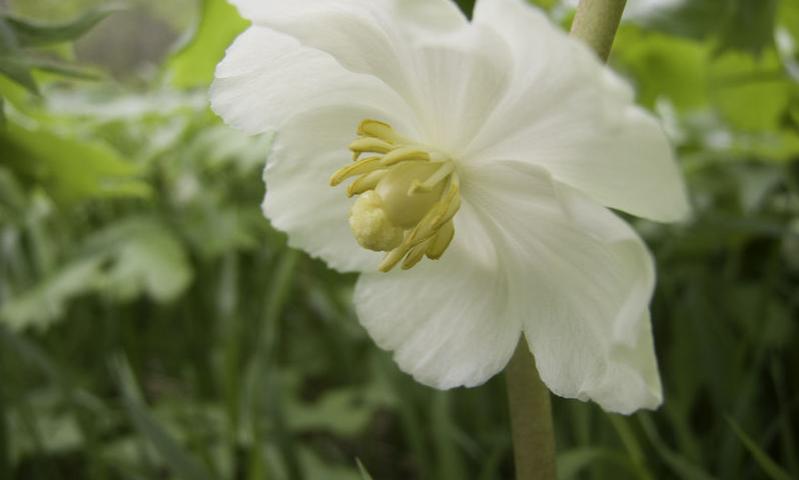 />
/>
NAME: Mayapple
LATIN NAME: Podophyllum Peltatum
OTHER NAMES: American mandrake, Wild Mandrake, May Apple, Raccoon Berry ,Indian apple, Duck Foot, Umbrella.
ORIGIN: North America
BOTANICAL INFORMATION: Mayapple is a perennial herbaceous plant from the Barberry family. Podophyllum Peltatum has a horizontal knobby rhizome up to 1 m long, 1.5 cm in diameter, reddish-brown on the outside and white on a break. Numerous roots with a length of up to 35 cm depart from the rhizome. Upright pinkish stems of a plant reach 30 cm in height and 1,5 cm in diameter. The stalk is hollow inside, 1-3 glumaceous sheathing leaves are located at its base. From the fork between the bases of leaf stalks a single flower (sometimes several flowers) on a long pedicle comes out. A single flower (sometimes several flowers) on a long pedicle come from the fork between the bases of the leaf stalks. The flowers are large, 7 cm in diameter, fragrant, white, yellow or red in color. The smell reminds melon flavor. All parts of the plant, except fruits, are poisonous. Flowering occurs in the second half of May and lasts for about three weeks. Butterflies and bumblebees are pollinators. It was noted that in nature Mayapple prefers to grow near certain plant species, which are characterized by rich production of nectar. Mayapple flowers do not form nectar on their own, that is why they use their neighbors as a “magnet” for insects. The fruit is a multi-seeded, edible, yellow, fragrant sweet-sour berry.
CHEMICAL COMPOSITION: The plant contains deoxypodophillotoxin podophyllotoxin, dehydropodophillotoxin, α-peltatin, β-peltatin, quercetin, berberine, flavonoids and lignans.
In addition, the composition of the Podophyllum Peltatum include a broad spectrum of macro elements: potassium, magnesium, iron and trace elements: manganese, copper, zinc, cobalt, molybdenum.
HISTORICAL INFORMATION:
The first mention of Mayapple dates back to 1619. There is a historical fact that North American Indians wore dried pieces of rhizomes of Mayapple around their necks, as an amulet.
Despite the fact that the Harvard botanist A. Gray described the fruits of Podophyllum Peltatum as “food for pigs and boys”, many people ate them as a food.
*This article is for informational purposes only. We suggest consulting a physician before using these or any other herbal supplements.
